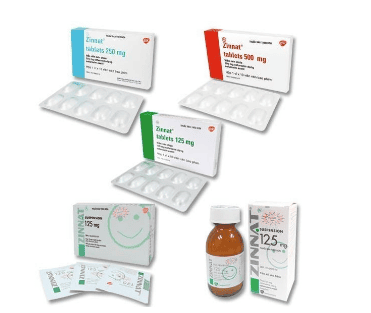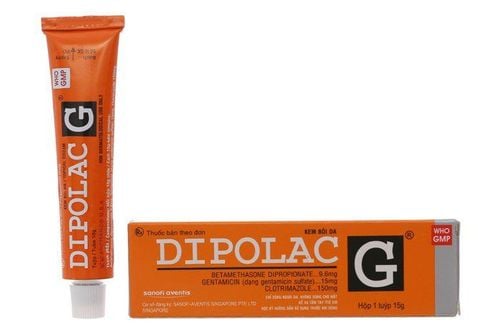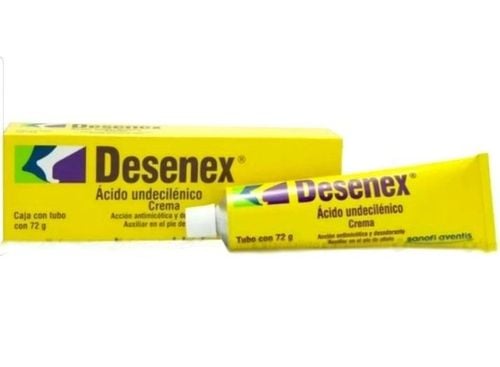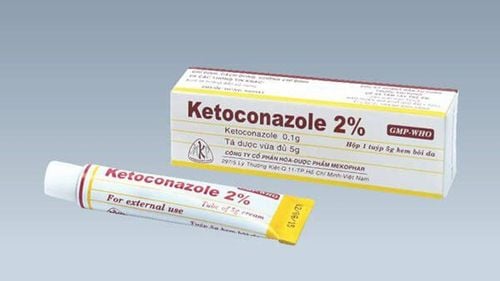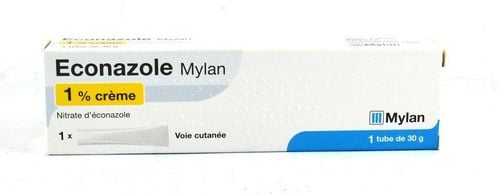This is an automatically translated article.
Diflazone medicine 150mg containing the active ingredient Fluconazole is indicated in the treatment of diseases caused by fungi such as tinea versicolor, vulvovaginal candidiasis. Let's learn about the uses and notes when using Diflazone through the article below.
1. Uses of the drug Diflazone 150mg
Diflazone medicine 150mg is made in the form of hard capsules containing the active ingredient Fluconazole.
Fluconazole belongs to the new generation of triazole antifungal drugs. The mechanism of action of Fluconazole is to modify cell membranes, release essential elements (eg, potassium ions, amino acids), increase cell membrane permeability, and reduce the import of precursor molecules of fungi. In addition, fluconazole also inhibits cytochrome P450 - alpha - demethylase and blocks ergosterol synthesis in fungal cell membranes.
Drug Diflazone 150mg is indicated in the following cases:
Candida infection in the vagina - vulva; Candida infections in the oropharynx, urinary tract, esophagus, peritoneum and systemic Candida diseases such as pulmonary candidiasis, blood; Meningitis caused by Cryptococcus neoformans; Fungal diseases caused by Coccidioides, Blastomyces, Histoplasma; Prophylactic treatment of Candida infections in immunocompromised patients, bone marrow transplant patients undergoing chemotherapy, cancer or HIV/AIDS patients.
2. Dosage of the drug Diflazone 150mg
The dose of Diflazone 150mg is prescribed by the doctor based on the medical condition and age of the patient, some recommendations on the dosage are as follows:
Adults:
Treatment of vaginal candidiasis: 150mg single dose Fluconazole; Treatment of tinea pedis (especially severe cases and resistant to topical treatment): 150mg/week for 2 to 4 weeks (may last 6 weeks for tinea pedis); For patients with renal insufficiency, the dose is prescribed based on creatinine clearance as follows: Creatinine clearance greater than 40ml/min prolongs dosing time to 24 hours/time compared to normal. Creatinine clearance ranged from 21-40ml/min using 1⁄2 of the usual dose or extending the dosing time to 48 hours/time. Creatinine clearance ranges from 10 to 20 ml/min using a dose of 1/3 of the usual dose or extending the dosing time to 72 hours/time. Adults: Diflazone 150mg is not indicated in children due to unsuitable dosage forms.
3. Diflucan 150mg . side effects
Diflazone 150mg medicine can cause some of the following side effects:
Side effects on the gastrointestinal tract: Abdominal pain, vomiting, nausea, flatulence, diarrhea ...; Seizures, headaches, hair loss...; Skin hypersensitivity reactions such as rash, urticaria...; In patients with severe fungal infections, blood changes (thrombocytopenia, leukopenia), liver function abnormalities, elevated liver enzymes, etc.; In case of experiencing unwanted effects, the patient should stop using Diflazone 150 and notify the treating doctor for examination.
4. Note when using Diflazone 150mg
Contraindicated to use Diflazone 150mg in patients with hypersensitivity to fluconazole, drugs of the Azole group or any of its ingredients.
Some notes when using Diflazone as follows:
Fluconazole active ingredient is mainly excreted through the urinary tract, so caution should be exercised when using the drug in patients with renal failure; Diflazone should be used with caution in patients with hepatic impairment. During treatment with Diflazone, liver enzyme activity should be monitored regularly and the patient's condition should be checked because the drug can cause hepatotoxicity; There is no experience with the treatment of fluconazole in children under 6 months of age, so its use in this population is determined by the physician based on the benefits and risks of treatment; For pregnant women, lactating women: Use Diflazone only in these subjects when the benefits outweigh the risks and need to be prescribed by the treating doctor.
5. Diflazone 150mg . drug interactions
Diflazone 150mg drug can cause some of the following interactions:
Diflazone 150mg increases plasma concentrations of active ingredients such as Cisapride, Terfenadine and Astemisole... thereby prolonging the QT interval and increasing the risk of arrhythmias. severe heart; Concomitant use of Diflazone and Warfarin prolongs Prothrombine time; Fluconazole prolongs the half-life of oral hypoglycemic agents (sulfonylurea derivatives)... Therefore, caution should be exercised when these drugs are used in combination; Diflazone increases the plasma concentration of phenytoin, so it is necessary to adjust the dose when using these two drugs simultaneously; Rifampicin increases the metabolism of Fluconazole; In renal transplant patients, Diflazone may increase the plasma concentration of cyclosporine, so cyclosporin levels should be monitored in these patients; Plasma concentrations of Theophyllin are increased when co-administered with Fluconazole, so it is necessary to monitor Theophyllin concentrations in patients receiving these two drugs simultaneously; The plasma concentrations of Midazolam and Indinavir are increased when co-administered with Diflazone; Clinical trials have demonstrated that concomitant administration of fluconazole and zidovudine increases plasma concentrations of zidovudine. Therefore, patients taking these two drugs at the same time should be closely monitored for possible side effects. Drug interactions occur that reduce the therapeutic effect of Diflazone, increase the risk of unwanted effects. Therefore, to ensure safety and effectiveness, patients need to inform their doctor of all drugs and supplements before being treated with Diflazone.
Please dial HOTLINE for more information or register for an appointment HERE. Download MyVinmec app to make appointments faster and to manage your bookings easily.





